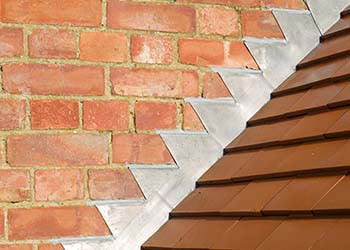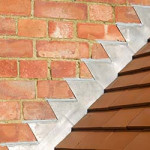
Everyone knows that roofing is important. It protects you and your family from the weather and keeps the heat and cold out of your home. However, being familiar with the components of a roof is far less common for people. There are tons of components to roofing, but today we’re focusing on the different types of roof flashing. Knowing what roof flashing is, you can help keep your roof in peak condition, and you’ll know what can go wrong with your roofing.
What is Roof Flashing?
Roof flashing is an incredibly valuable part of your roof. The main goal of roof flashing is to protect vulnerable sections of the roof from water. Installing flashing is important in areas where opposing surfaces meet. That means valleys in the roof, where the roof meets a wall, where the roof meets the chimney, and other similar places. It’s important that roof flashing doesn’t degrade from water, so they make it out of steel, copper, or aluminum.
What are the Types of Roof Flashing?
Continuous Flashing:
Continuous flashing is a long piece of flashing that protects the meeting place of a sloped roof and a vertical wall. Also another name for continuous flashing is “apron flashing.”
Base Flashing:
Base flashing is one of two flashing pieces that are put around protruding roof features like chimneys. The first piece wraps around the roof fixture, and then the second piece wraps over the first piece to ensure water can’t run behind the first piece.
Counter Flashing:
Counter flashing is the second of two pieces made for protruding roof features. It’s the second piece that protects the first piece.
Step Flashing:
This flashing is bent 90 degrees for dormers, chimneys, and some skylights. Installing several pieces is typical; the edges are hidden under shingles, so they can’t have water flow beneath them.
Skylight Flashing:
Most skylights come with their flashing, but you always need skylight flashing! Make sure you have flashing if you’re installing a skylight.
Valley Flashing:
Any areas of your roof that dip lower than the other areas are valleys, and they need flashing. Without flashing, they’ll quickly have water seep into them.
Drip Edges:
When installing a roof, you put drip edges at the edge, so water can run off the roof without causing damage.
Kickout Flashing:
Kickout flashing bridges the gap between the roof and the gutters, so water can seamlessly move off the roof and into the gutters.
































